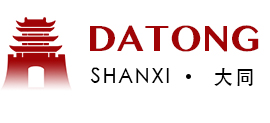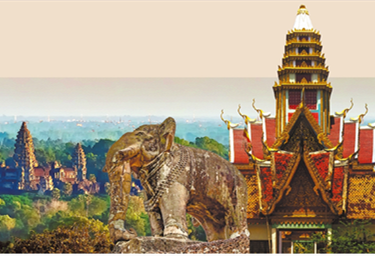History fuels boom in old city
DATONG, Shanxi — From a frontier between sedentary communities and nomadic tribes to a major northern Chinese city whose name translates as "Great Harmony", from a coal-polluted industrial hub to a pristine tourist magnet that is home to countless historical treasures, Datong tells a story of openness, resilience and innovation.
The present-day city in Shanxi province, which once powered China's economic rise with its coal, is now blazing new trails for growth by tapping into its 2,000-plus-year history and 3,000 historical sites amid renewed nationwide interest in traditional culture, changes that have impacted the lives of many residents.
Riding Datong's tourist boom, Lu Xin, who is also known by the stage name A Lang, is a 36-year-old electrician-turned-singer who can now afford to make writing and singing songs about the city his full-time job. He draws inspiration from tidbits of life in Datong, and more importantly, from its rich cultural heritage.
Pillar of diversity
Sandwiched between two winding sections of the Great Wall and situated at the easternmost tip of the Silk Road during the 5th century, Datong was a hub where Chinese, foreigners and ethnic groups from north China engaged in cultural interaction.
Its distinct geography and history contributed to its ethos of openness and inclusivity. Yao Zijin, a local cultural specialist, said Datong is the epitome of the history of the multi-ethnic and unified Chinese nation taking shape.
Two historical events set monumental examples for generations to come. Some 2,330 years ago, King Wuling of Zhao State, which Datong was a part of during the Warring States Period (475 BC-221 BC), feared that the flapping robes his commanders and soldiers wore might be a hindrance, so he initiated military reform that is now encapsulated in the four-character idiom "Wearing Hu-styled attire and shooting from horseback".
By adopting much tighter attire suited to horse-riding nomads – who were generally categorized as Hu at the time – and training the cavalry in horseback archery, the king's reforms greatly improved the Zhao military's fighting capabilities.
It served as a curtain-raiser for greater interaction and mutual learning between different ethnic groups inhabiting the ancient Datong region, and the king's mausoleum is now a cultural heritage site.
Datong's ancient glory reached its apex when Pingcheng (an ancient name for the city) became the capital of the Northern Wei Dynasty (386-534), which was founded by the Xianbei ethnic group. Its rulers settled in the Datong region and decided to adopt Han Chinese family names, language and clothing.
Nowhere are the signs of that mutual learning and mixing more visible than in the Yungang Grottoes, a UNESCO World Heritage site that is home to 50,000 Buddhist stone sculptures and was built largely during the Northern Wei Dynasty period.
Its architecture consists of not only Chinese but also Indian and even Greek elements. Sculptures depicting musical scenes in 24 caves present a kaleidoscope of instruments, ranging from Han Chinese zithers and flutes, Xianbei horns, the waist-affixed drums of Qiuci State and Persian harps.
Yuan Xiaozhong, 55, is witness to the changes the grottoes have undergone over the past half century. Born in Yungang village adjacent to the grottoes, Yuan now heads the monitoring department at the Yungang Grottoes Research Institute.
"By delving deeper into the grottoes, I became increasingly convinced that Chinese civilization was jointly created by people of different ethnic groups. It was mutual learning between different cultures that sustained and invigorated Chinese culture, and that is also the wellspring of our cultural confidence," he said.
Modern makeover
Fast-forward to the modern era, and the city once heavily reliant on coal mining has diversified its industrial mix by embracing cleaner industries, including modern medicines, general aviation, new materials, new energy and, above all, the cultural and tourism industry.
Since the People's Republic of China was founded in 1949, Datong has produced over 3 billion metric tons of coal. However, heavy pollution was one inconvenient byproduct of mining.
Yuan Xiaozhong remembers that the city was once so woefully polluted that locals joked that the Buddha sculptures in the grottoes were draped in black cassocks.
The city embarked on the protection and renovation of its cultural heritage, as well as an environmental face-lift. Over the past decade, the share of the non-coal industry in its industrial mix has risen by 10 percentage points.
From 2012 to 2019, aggregate revenues of Datong's tourism industry skyrocketed from 16.28 billion yuan ($2.28 billion) to 76.21 billion yuan, and the number of tourist visits rose from 18.9 to 83.97 million.
Today, a coal mine across the river from the grottoes has been retrofitted into a coal-themed national park, where visitors are shuttled in carts 150 meters underground, clad in mining uniforms, to learn about the 140-million-year-old fossil fuel.
Wei Min is the 23-year-old daughter of a miner and now works in the park as an in-house tour guide.
"I am working in the same place as my father, but in a totally different capacity," she said.
The restoration of Datong ancient city, which began in 2008, created another tourist attraction. The city wall inspired local singer Lu Xin. Watching the sunset from the wall and listening to wind chimes tinkling, he found himself in dialogue with the city, past and present.
Thanks to the boom in tourism, his band now stages scores of shows every year, compared to little more than a dozen in the past. "I plan to hold immersive street shows on a regular basis, telling my Datong stories to a greater audience," he said.
The boom is happening amid burgeoning interest in traditional Chinese culture, particularly among the young. The city is full of overcrowded cultural venues. A Great-Wall-themed photography exhibition held in the Nianxia Arts Center draws long lines of visitors. Stores selling souvenirs are packed with tourists. A dance performance that tries to capture the beauty of a smiling Buddha sculpture in the Huayan Monastery, another cultural heritage site in Datong, has also gained popularity.
Tourists flock to Datong and share their marvels for this previously "underrated" city on social media.
"In the moonlight of Datong, past and present meet and drift apart and numerous heroes come and go, with the aroma of spirit wafting in breeze and dreams," Lu Xin sings, expressing his affection for the city.


